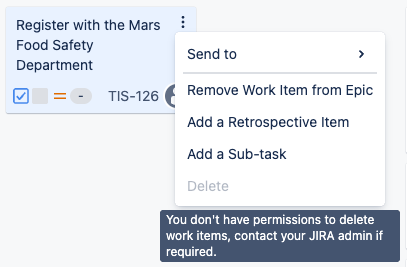Quickly edit work items or issues on the User story map to refine your backlog, plan an upcoming sprint or version, or update in-progress work.
Editing item fields
On the User story map, you can edit an item’s:
-
Summary
-
Estimate
-
Assignee
-
Status
-
Priority
-
Work item/issue type
To edit other fields:
-
Click on the work item/issue key to open the in-app issue view .
-
Ctrl+click on Windows or (cmd+click on a Mac) on an issue key to open that issue in Jira in a new tab.
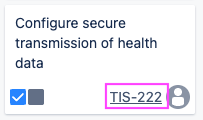
Assignee, status, priority, and type editing is available:
-
on Jira Cloud (i.e. Jira sites with “….atlassian.net” in the URL)
on Jira Data Center with app version 15.3.0+; a Jira Administrator can install the latest version .
On earlier versions on Data Center, only the Summary and Estimate can be edited.
Edit item summary
The summary field of items and epics is shown on the User story map.
Click to edit the summary.
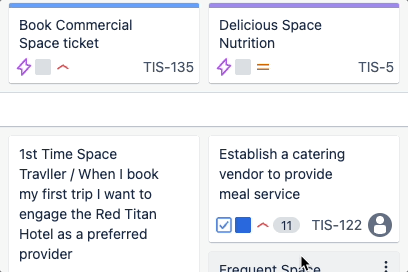
Epics on Jira Data Center show and edit the “Epic Name” field, instead of the summary .
Edit estimate
On Scrum boards, the User story map will show your board’s Estimation Statistic in a grey lozenge.
Click to add or edit the estimate.
Learn more about estimation on the User story map .
Estimation is not available on Kanban boards.
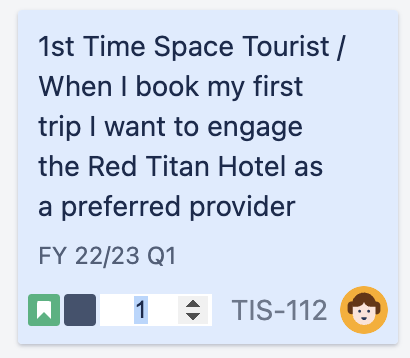
Edit Assignee
Click on an assignee icon to edit the assignee of an item.
Users with “Assignable User” / “Assign issues” permission in the project’s Permission scheme will appear in the user list. Learn more about permissions in Jira Cloud or Jira Data Center .
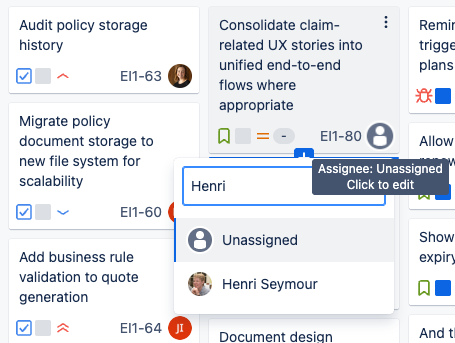
Atlassian Cloud user profile photos can only be displayed in the Easy Agile TeamRhythm app if the visibility is set to “Anyone”. This is due to a limitation of the Atlassian platform . User initials on a randomised colour will be shown if the photo is not available.
Update Status
Click on the coloured status square to update the status of an item.
The available statuses are controlled by the Workflow for this item in Jira. Learn more about Workflows in Jira Cloud or Jira Data Center .
Updating the status may fail if there is a Transition Screen or other workflow restriction. Open the item in Jira to change the status.
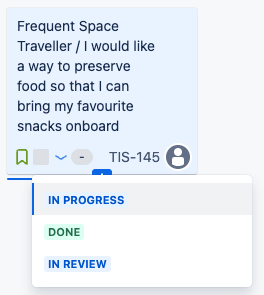
Edit Priority
Click on the Priority icon to edit the Priority of an item.
The icon can be toggled off from the Layout menu in the top right of the app.
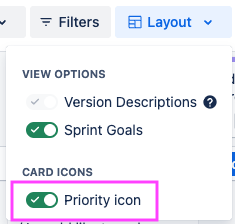
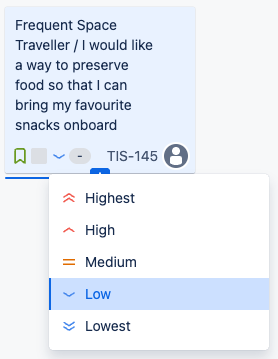
Change work item/issue type
Click the work item/issue type icon to change the type of the item.
If the new type requires additional fields to be set, there will be a second step to complete the required fields.
Field configuration for different work item types is managed in Work type screen schemes on Jira Cloud and Issue type screen schemes on Jira Data Center .
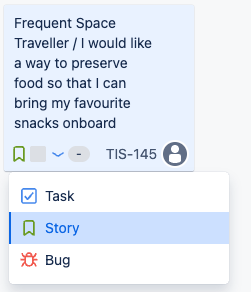
Troubleshooting field editing
A user can only edit a field on the User story map if they have access to make the same change in Jira. If you encounter problems editing a field, first try opening the issue in Jira to edit the field.
Jira Administrator permission is generally required to modify field availability/permissions.
Learn more about field and item configuration in Jira .
Re-ordering and scheduling items
Reorder with drag-and-drop to change rank
Drag and drop items or epics on the User story map to change their order. This also updates the order/rank in Jira.
Read more about Order, rank, and drag and drop and Jira board settings .
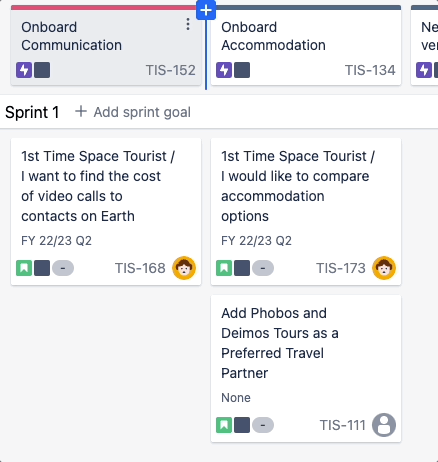
You can also use the “…” or right-click menu to send an item to the top or bottom of the backlog.
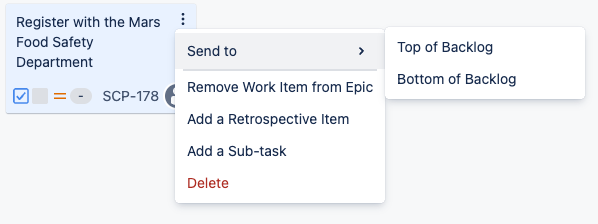
Note that drag-and-drop reordering is only available if your Jira board is ordered by Rank. Learn about resolving drag and drop errors by enabling Ranking .
Update epic link with drag and drop
Drag items between columns to change their epic/parent.
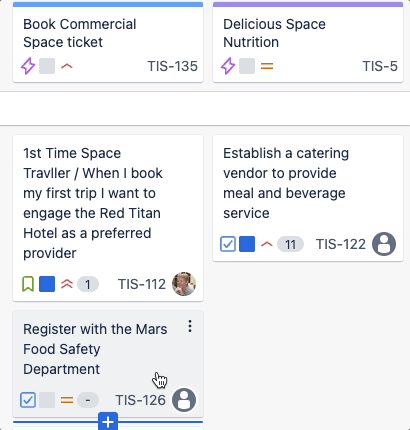
Add items with no parent/epic
If an item doesn’t have a parent epic (or an epic-level parent of a different type), it won’t show on the User story map.
Open the “Issues without parent” column from the button in the top right-hand corner of the app. From here, you can find items without parent epics, and add them to the User story map with drag and drop.
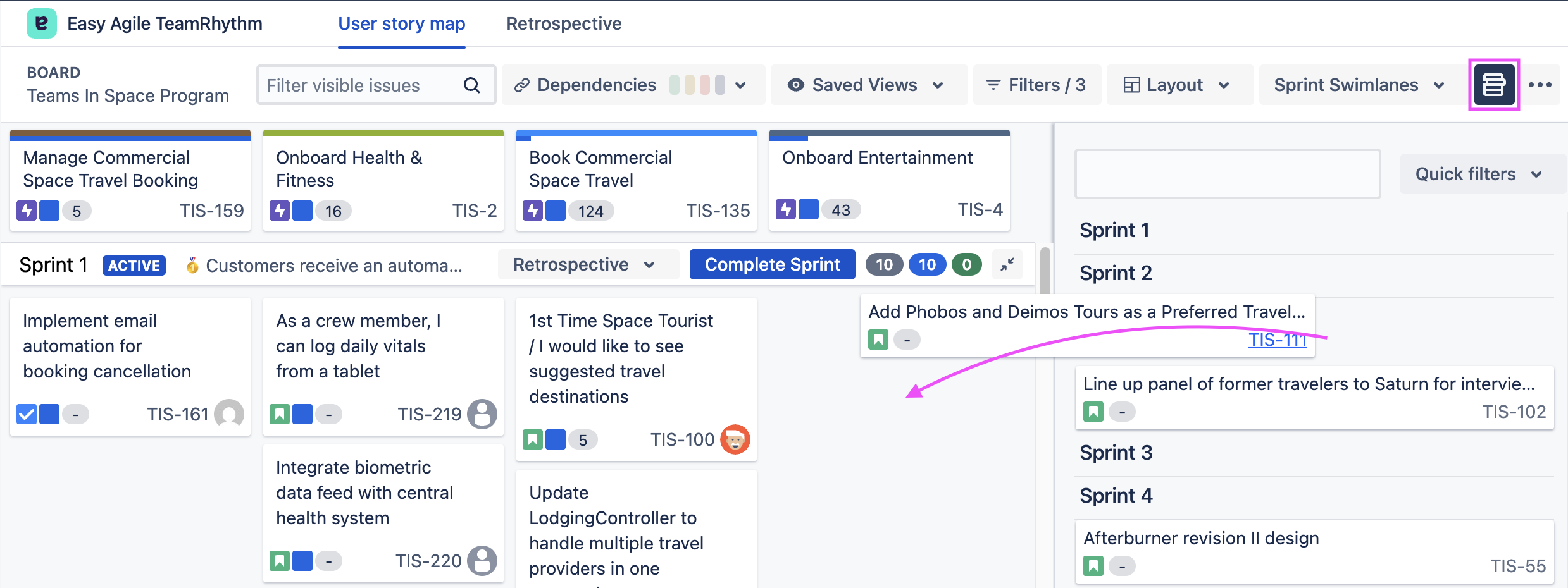
Items that have a parent/epic won’t show in this panel – even if that parent/epic doesn’t appear on this Jira board or User story map.
Schedule items in sprints/versions with drag and drop
When sprint or version swimlanes are enabled, drag items between sprints/versions to update the Sprint or Fix Version field.
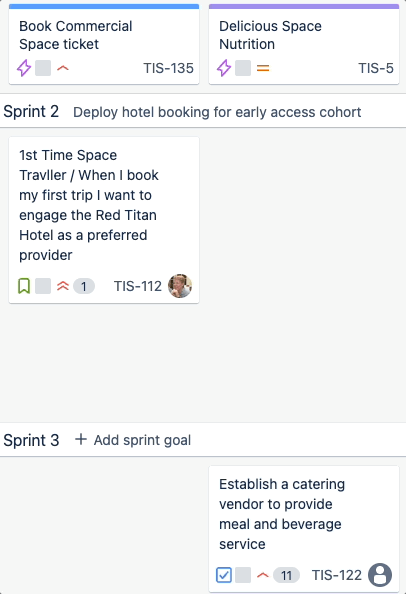
When sprint swimlanes are enabled, you can also use the “…” or right-click menu to send selected items to a specific sprint.

Drag and drop multiple items
Shift-click to select multiple items. You can then drag and drop any of them to move all the selected items to a different epic, sprint or version.
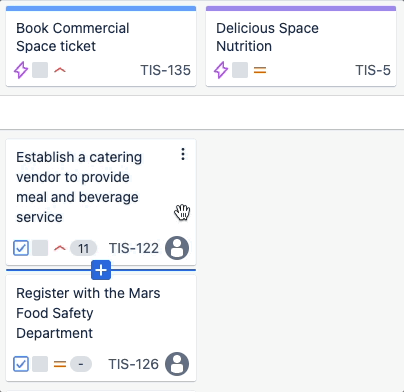
Delete items
Use the “…” or right-click on an item to find the Delete button.
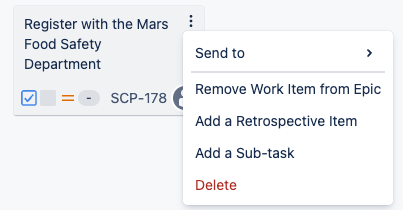
You’ll see a confirmation dialogue before the item is permanently deleted.

If you’re missing “Delete issues” permission, the Delete button will be disabled.
